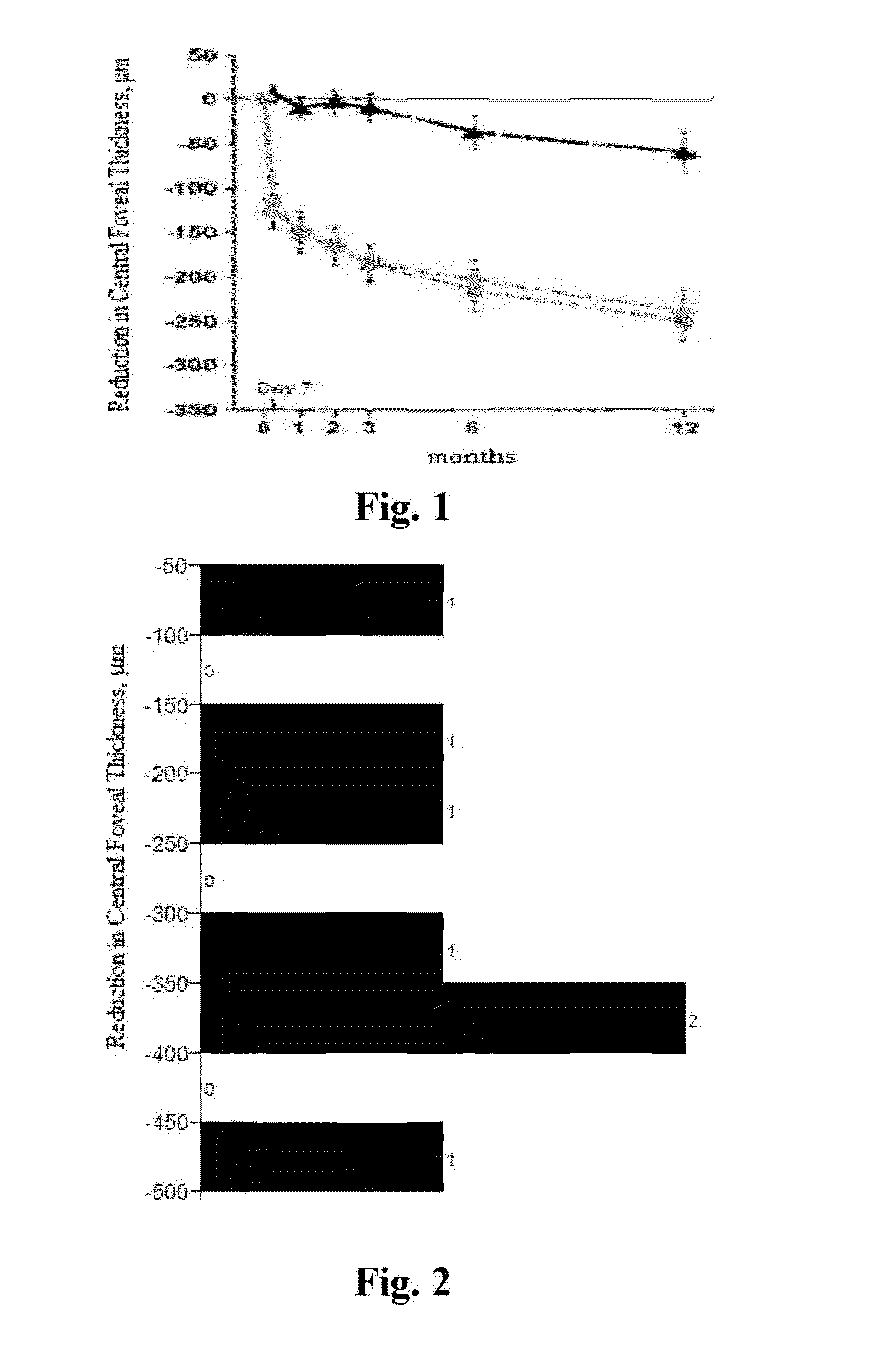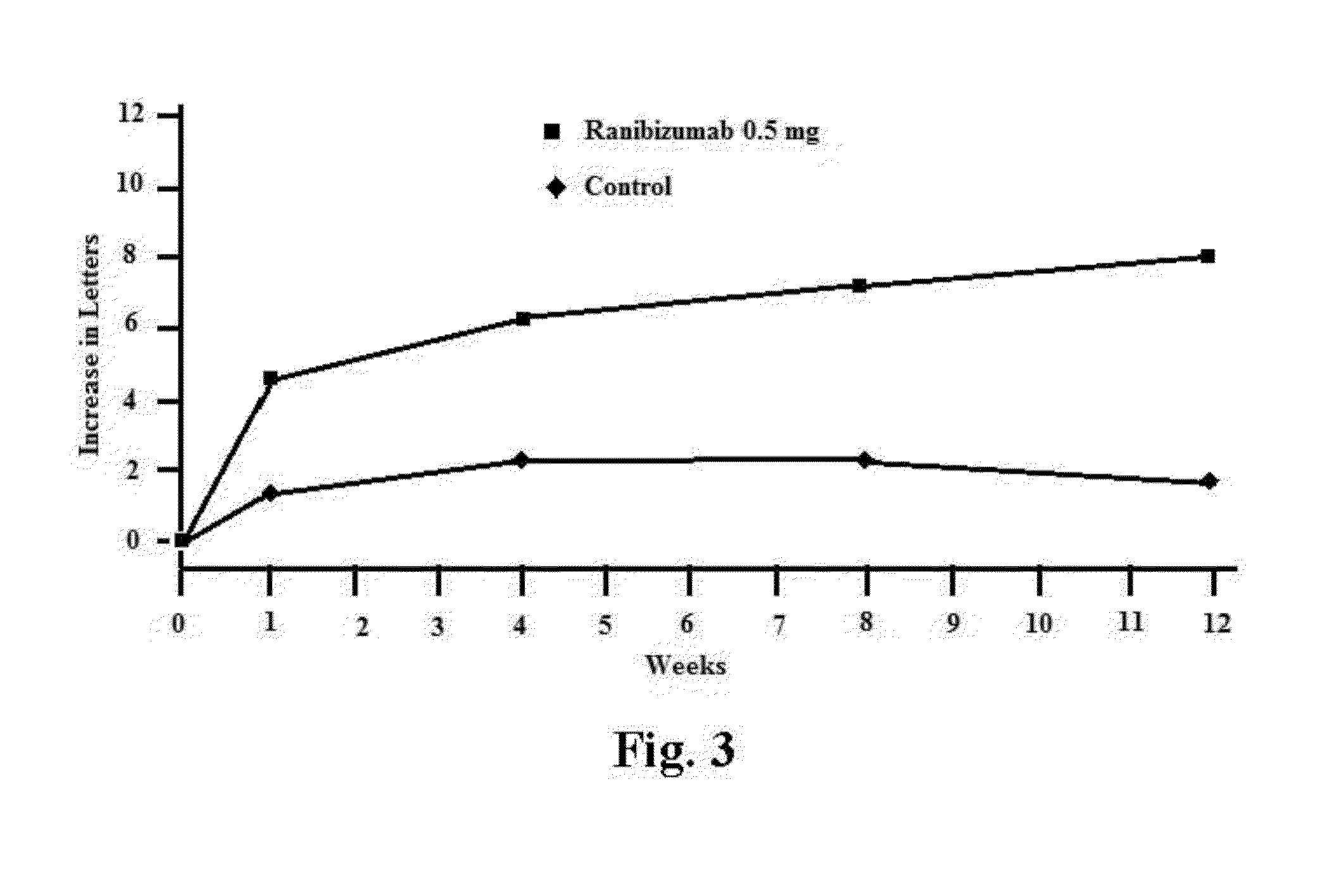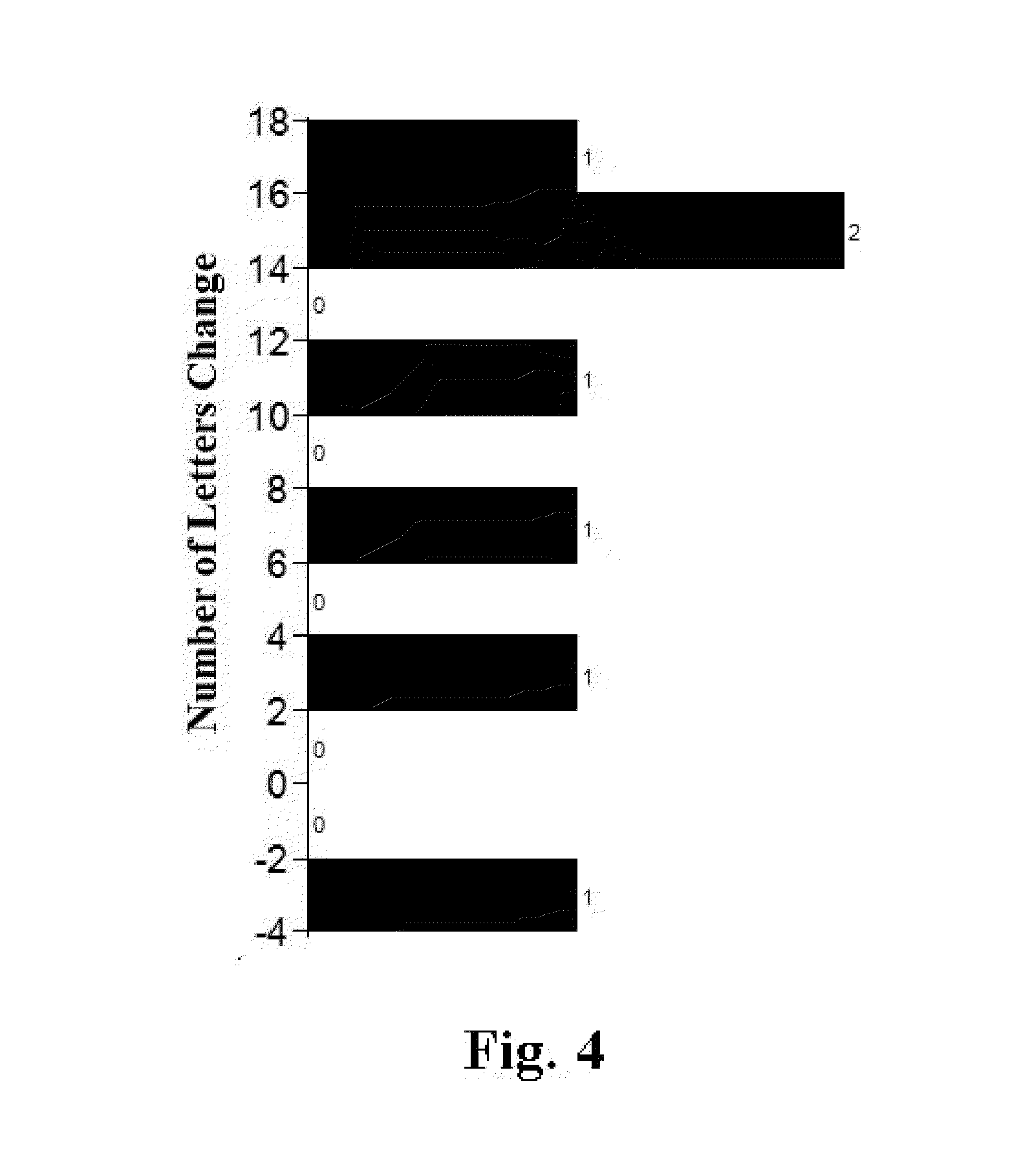Compositions and methods for treating ocular diseases
a technology for ocular diseases and compositions, applied in the field of compositions and methods for treating ocular diseases, can solve problems such as blindness in the elderly, impairment of normal structure or function, and visual impairment and blindness
- Summary
- Abstract
- Description
- Claims
- Application Information
AI Technical Summary
Benefits of technology
Problems solved by technology
Method used
Image
Examples
example 1
4-{(S)-2-[(S)-2-(tert-Butoxycarbonylamino)-3-phenylpropanamido]-2-(4-ethylthiazol-2-yl)ethyl}phenylsulfamic acid (5)
Preparation of [1-(S)-carbamoyl-2-(4-nitrophenyl)ethyl-carbamic acid tert-butyl ester (1)
[0337]To a 0° C. solution of 2-(S)-tert-butoxycarbonylamino-3-(4-nitrophenyl)-propionic acid and N-methylmorpholine (1.1 mL, 9.65 mmol) in DMF (10 mL) is added dropwise iso-butyl chloroformate (1.25 mL, 9.65 mmol). The mixture is stirred at 0° C. for 20 minutes after which NH3 (g) is passed through the reaction mixture for 30 minutes at 0° C. The reaction mixture is concentrated and the residue dissolved in EtOAc, washed successively with 5% citric acid, water, 5% NaHCO3, water and brine, dried (Na2SO4), filtered and concentrated in vacuo to a residue that is triturated with a mixture of EtOAc / petroleum ether to provide 2.2 g (74%) of the desired product as a white solid.
Preparation of [2-(4-nitrophenyl)-1-(S)-thiocarbamoylethyl]carbamic acid tert-butyl ester (2)
[0338]To a solution...
example 17
(2-Methylthiazol-4-yl)methanesulfonyl chloride (41)
Preparation of sodium (2-methylthiazol-4-yl)methanesulfonate (40)
[0520]4-Chloromethyl-2-methylthiazole (250 mg, 1.69 mmol) is dissolved in H2O (2 mL) and treated with sodium sulfite (224 mg, 1.78 mmol). The reaction mixture is subjected to microwave irradiation for 20 minutes at 200° C. The reaction mixture is diluted with H2O (30 mL) and washed with EtOAc (2×25 mL). The aqueous layer is concentrated to afford 0.368 g of the desired product as a yellow solid. LC / MS ESI+ 194 (M+1, free acid).
Preparation of (2-methylthiazol-4-yl)methanesulfonyl chloride (41)
[0521]Sodium (2-methylthiazol-4-yl)methanesulfonate, 40, (357 mg, 1.66 mmol) is dissolved in phosphorous oxychloride (6 mL) and is treated with phosphorous pentachloride (345 mg, 1.66 mmol). The reaction mixture is stirred at 50° C. for 3 hours, then allowed to cool to room temperature. The solvent is removed under reduced pressure and the residue is re-dissolved in CH2Cl2 (40 mL) ...
example 18
(S)-4-(2-(2-Phenylthiazol-4-yl)2-(4-(methoxycarbonyl)thiazole-5-ylamino)ethyl)phenylsulfamic acid (45)
Preparation of (S)-2-(4-nitrophenyl)-1-(2-phenylthiazol-4-yl)ethanamine hydrobromide salt (42)
[0535]A mixture of (S)-tert-butyl 4-bromo-1-(4-nitrophenyl)-3-oxobutan-2-ylcarbamate, 7, (1.62 g, 4.17 mmol) and thiobenzamide (0.63 g, 4.60 mmol) in CH3CN (5 mL) is refluxed for 24 hours. The reaction mixture is cooled to room temperature and diethyl ether (50 mL) is added to the solution. The precipitate which forms is collected by filtration. The solid is dried under vacuum to afford 1.2 g (67% yield) of the desired product. LC / MS ESI+326 (M+1).
Preparation of (S)-4-(1-isothiocyanato-2-(4-nitrophenyl)ethyl)-2-phenylthiazole (43)
[0536]To a solution of (S)-2-(4-nitrophenyl)-1-(2-phenylthiazol-4-yl)ethanamine hydrobromide salt, 42, (726 mg, 1.79 mmol) and CaCO3 (716 mg, 7.16 mmol) in H2O (2 mL) is added CCl4 (3 mL) followed by thiophosgene (0.28 mL, 3.58 mmol). The reaction is stirred at roo...
PUM
| Property | Measurement | Unit |
|---|---|---|
| thickness | aaaaa | aaaaa |
| Thickness | aaaaa | aaaaa |
| temperature | aaaaa | aaaaa |
Abstract
Description
Claims
Application Information
 Login to View More
Login to View More - R&D
- Intellectual Property
- Life Sciences
- Materials
- Tech Scout
- Unparalleled Data Quality
- Higher Quality Content
- 60% Fewer Hallucinations
Browse by: Latest US Patents, China's latest patents, Technical Efficacy Thesaurus, Application Domain, Technology Topic, Popular Technical Reports.
© 2025 PatSnap. All rights reserved.Legal|Privacy policy|Modern Slavery Act Transparency Statement|Sitemap|About US| Contact US: help@patsnap.com



